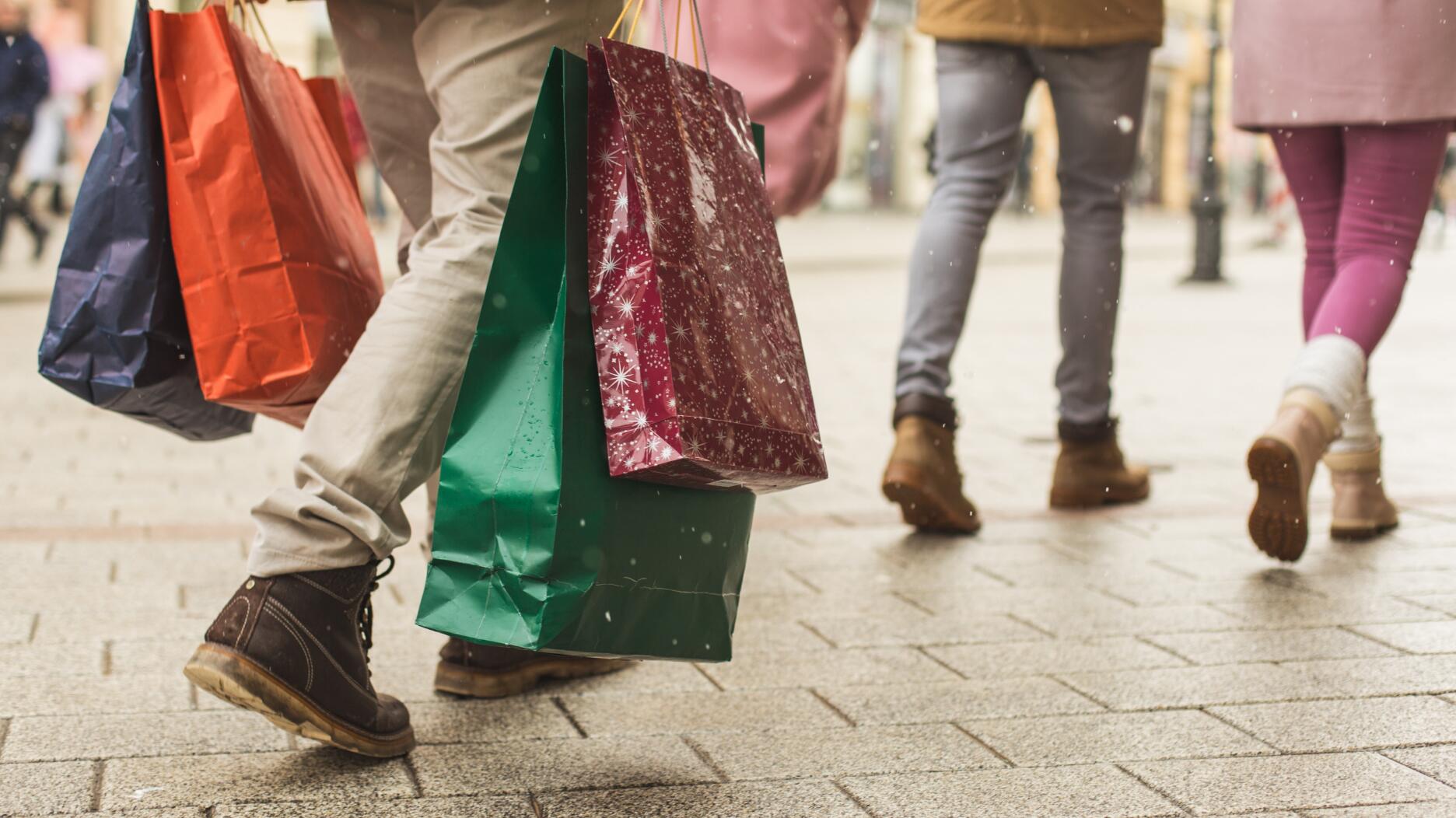The special-edition egg pendant ingested in a New Zealand jewelry store was recovered after a six-day wait.
How Small Businesses Are Faring, By the Numbers
A survey by the National Federation of Independent Business took a look at COVID-19 business disruptions, PPP and EIDL loans, and more.

Nashville, Tenn.—Small businesses have been hit especially hard by the COVID-19 pandemic, struggling in the face of mandated store closures and sinking sales.
A survey published earlier this month by the National Federation of Independent Business (NFIB) took an in-depth look at how small businesses are faring as we approach month five of coronavirus-related shutdowns in the United States.
NFIB took a random sample of its membership database of about 300,000 small business owners.
It conducted the survey by email in mid-June and received 631 usable responses, meaning surveys in which most questions were answered.
Respondents in the retail and restaurant industry made up 19 percent of the surveyed group, which also included those in manufacturing, wholesale, agriculture, services, and more.
The pandemic has disrupted retailers big and small, forcing them to change the way they operate, from practicing social distancing to implementing strict cleaning procedures.
More than half of survey-takers said changes to their operations were “significant” (23 percent) or “moderate” (32 percent), while 30 percent saw slight changes and 16 percent said operations have not changed.
However, things are looking up as stores gradually begin to reopen.
About 40 percent of respondents said their current sales volume is 75 percent or more of pre-pandemic levels, a jump from 28 percent in May.
Eased restrictions and store reopenings have led to stronger sales for some small business owners, but not across the board.
While 27 percent saw a significant or moderate increase in sales and another 27 percent saw a slight increase, sales levels didn’t budge for 42 percent of small business owners.
The boost from reopenings may be short-lived in places like Texas, where plans to get back to business have been put on hold amid a jump in coronavirus cases.
The financial toll of the virus led many small businesses in need of funds to apply for a Paycheck Protection Program loan, but the program’s rocky rollout caused a slew of problems for business owners and banks alike.
Some of the complaints were addressed with the passage of the Paycheck Protection Program Flexibility Act.
The number of small businesses applying for a PPP loan was up slightly month-over-month, 81 percent in June compared with 77 percent as of May 29.
With the June 30 application deadline looming, only 3 percent of respondents said they would be applying before then.
When applying for the first round of PPP loans, those who had existing relationships with banking institutions were
Most of the loan applicants surveyed, 85 percent, went through their usual bank.
Nearly all applicants surveyed in June, 97 percent, received their PPP loan. Only 3 percent of borrowers have spent the money and applied for loan forgiveness.
The recent update to the program gave borrowers more time to distribute the funds. Instead of the initial eight weeks, recipients now have 24 weeks or until Dec. 31, whichever is earlier, to allocate the money.
Of the PPP loan borrowers in the NFIB’s June survey, 59 percent said they will take the extra time while 41 percent will spend the money within the eight-week time frame.
The PPP update also allows more of the money to be used for non-payroll expenses and added two new exemptions related to full-time employees and loan forgiveness.
The changes were considered “very helpful” for maximizing loan forgiveness by 40 percent of borrowers while 19 percent found them to be “moderately helpful.”
Seventeen percent said they were “somewhat helpful” while 6 percent described them as “not helpful.”
Though the PPP was set up so employers could retain their employees, that may not be possible for every loan recipient.
Of the borrowers surveyed, 14 percent expect to lay off at least some employees even after using the loans.
Half of that segment expects to lay off one or two employees while 12 percent expect to lay off 10 or more employees.
In addition to PPP, small business owners may have been eligible for The Economic Injury Disaster Loan (EIDL) program run by the U.S. Small Business Administration.
Thirty-five percent of respondents applied for an EIDL loan with most still waiting for the loan to be processed, according to the survey.
A total of 38 percent of respondents said they’ve already received their loans.
The EIDL emergency grant was also available, which allows a business that has applied for a disaster loan to get an immediate advance of up to $10,000, which can be used for payroll purposes.
Of those who requested a grant, 72 percent said they’ve received it.
Of the respondents who applied for a PPL loan, an EIDL loan, or both, 47 percent expect to need additional financial support over the next 12 months.
More than half that segment, 56 percent, expect to need less than $50,000 to keep things afloat, but 27 percent expect to need more than $100,000.
As for taxes, a new deferment allows businesses to defer the deposit and payment of the employers’ share of Social Security taxes until Dec. 31.
Around 41 percent of respondents were familiar with the new provision, with 6 percent already deferring.
Almost two-thirds of respondents said they didn’t plan to defer tax payments, while 5 percent said they do plan to do so 31 percent said they might.
Top economists are expecting the U.S. economic recovery to be slow and have said small businesses are especially in danger of financial distress.
At his semiannual monetary policy report before Congress earlier this month, Federal Reserve Chairman Jerome Powell said there was “significant uncertainty” surrounding the pace of economic recovery.
“If a small or medium-sized business becomes insolvent because the economy recovers too slowly, we lose more than just that business,” he said. “These businesses are the heart of our economy and often embody the work of generations.”
The Latest

Associate Editor Natalie Francisco plays favorites with Piece of the Week, selecting a standout piece of jewelry from each month of 2025.

The “Love and Desire” campaign is inspired by the magic that follows when one’s heart leads the way, said the brand.

How Jewelers of America’s 20 Under 40 are leading to ensure a brighter future for the jewelry industry.

Two awardees will receive free tuition for an educational course at the Swiss lab, with flights and lodging included.


Berta de Pablos-Barbier will replace Alexander Lacik at the start of January, two months earlier than expected.

Sotheby’s held its first two jewelry sales at the Breuer building last week, and they totaled nearly $44 million.

Roseco’s 704-page catalog showcases new lab-grown diamonds, findings, tools & more—available in print or interactive digital editions.

Winners will receive free registration and lodging for its fourth annual event in Detroit.

Here are six ideas for making more engaging content for Instagram Reels and TikTok, courtesy of Duvall O’Steen and Jen Cullen Williams.

The honorees include a notable jewelry brand, an industry veteran, and an independent retailer.

Carlos Jose Hernandez and Joshua Zuazo were sentenced to life without the possibility of parole in the 2024 murder of Hussein “Sam” Murray.

Yood will serve alongside Eduard Stefanescu, the sustainability manager for C.Hafner, a precious metals refiner in Germany.

The New Orleans jeweler is also hosting pop-up jewelry boutiques in New York City and Dallas.

Set in a Tiffany & Co. necklace, it sold for $4.2 million, the highest price and price per carat paid for a Paraíba tourmaline at auction.

The jeweler’s “Deep Freeze” display showcases its iconic jewelry designs frozen in a vintage icebox.

Take luxury gifting to new heights this holiday season with the jeweler’s showstopping 12-carat sphene ring.

This year's theme is “Unveiling the Depths of the Ocean.”

In its annual report, Pinterest noted an increase in searches for brooches, heirloom jewelry, and ‘80s luxury.

Starting Jan. 1, customers can request the service for opal, peridot, and demantoid garnet.

The 111-year-old retailer celebrated the opening of its new location in Salem, New Hampshire, which is its third store in the state.

The new catalog features its most popular chains as well as new styles.

The filmmaker’s personal F.P. Journe “FFC” prototype was the star of Phillips’ recent record-setting watch auction in New York.

The new location in the Design District pays homage to Miami’s Art Deco heritage and its connection to the ocean.

“Longtime favorite” presenters, as well as first-time speakers, will lead talks and workshops at the annual event in Tucson next year.

Silas Smith of Meridian Metalworks won the challenge with his pendant that blends Australian and American landscapes.

The sale of the 31.68-carat, sunset-hued stone was part of Sotheby’s first series of events and auctions in Abu Dhabi.


























